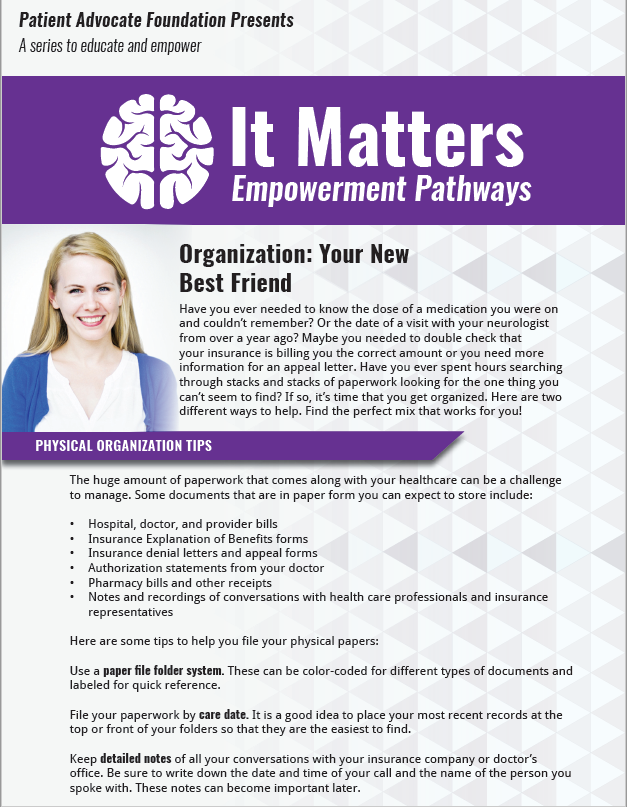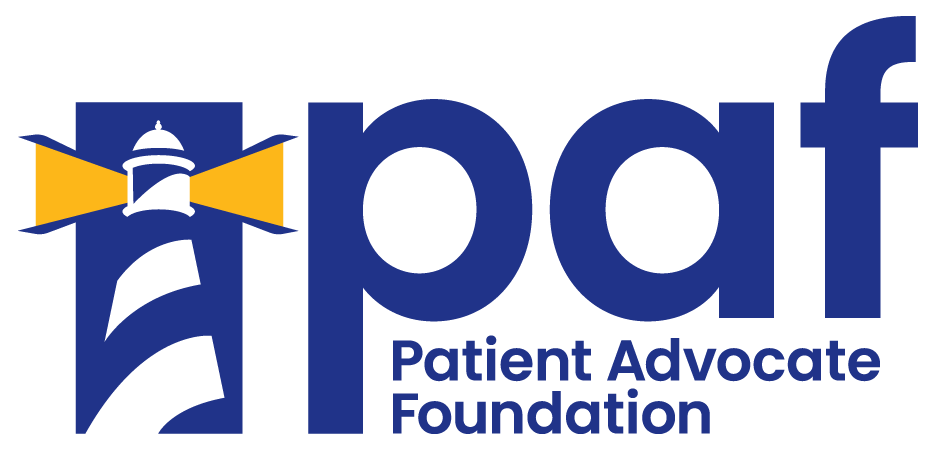Downloads

Organization: Your New Best Friend
The huge amount of paperwork that comes along with your healthcare can be a challenge to manage. Here are two different ways to help!
 Menu
≡
╳
Menu
≡
╳
Patient Advocate Foundation (PAF) is a national 501 (c)(3) non-profit organization which provides case management services and financial aid to Americans with chronic, life threatening and debilitating illnesses.
In 2023, PAF served a population
of patients with over 958 distinct diagnoses.
Donate today and help Patient Advocate Foundation continue to help patients get access to the prescribed healthcare that they need.

The huge amount of paperwork that comes along with your healthcare can be a challenge to manage. Here are two different ways to help!